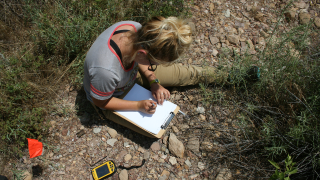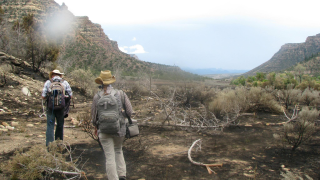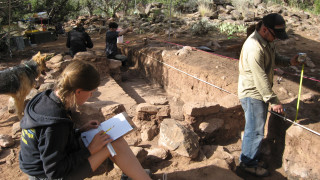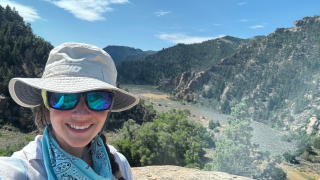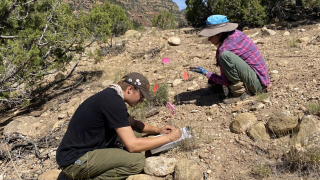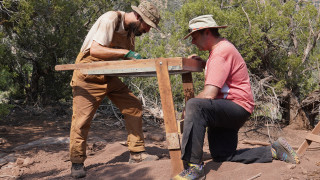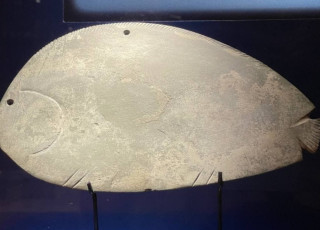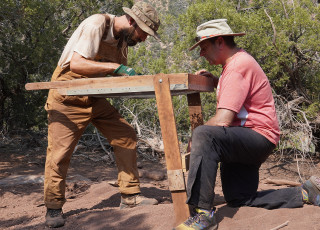Beyond Mummies and Movies: The Realities of an Archaeologist's Life
This article was published in advance of NHMU's Women in Anthropology celebration, which will take place on Saturday, March 22. The event is included with regular admission, which is free for Museum Members.
By Olivia Barney
The charismatic explorers you see on the big screen uncover hidden tombs in Egypt, narrowly avoid sudden peril, and, despite the odds, somehow end up saving the world from an ancient mummy’s curse (we’re looking at you, Imhotep). These witty action-adventure movies are classics for a reason; they excite our desire to understand the history of the people and places who came before us, and they give us someone heroic and resourceful to root for.
For those with an interest in history and archaeology, these films can spark curiosity. Unfortunately, they can also set unrealistic expectations for what a day-in-the-life of an archaeologist looks like.
Without actually doing it, I think it's very difficult to get a real sense of it. And to know if that's what you want to commit to doing. It's different. It's amazing. But not The Mummy (1999). There’s no Brendan Fraser out in the field — unfortunately for all of us.
What Does Archaeology Really Look Like?
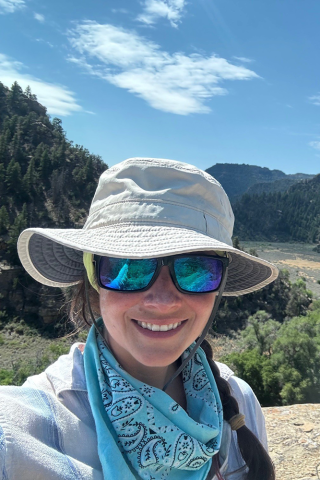
Jamie Greenland on survey in Range Creek Canyon.
Jamie Greenland is an archaeologist, one of the many real-life, resourceful heroes who helps us understand the past. She’s also the Range Creek Lab Manager and an Anthropology Collections Assistant at NHMU.
Each summer, Greenland spends 40 days in Range Creek Canyon, where over 500 archeological sites remain in relatively pristine condition, thanks to the restricted access of the protected land. Most of these sites are around 1,000 years old and can be attributed to the Freemont. These first peoples of Utah were maize farmers, growing corn and other grains to support their families, despite the limited resource of water in the area.
The landscape of Range Creek Canyon, as in much of Utah, has relatively shallow bedrock, which means that many sites (though not all) are visible on the surface. This makes surveying and excavating a site in Utah very different than other areas of the United States, where an entire site might be buried deeply under the covering sediment.
Greenland described the process of completing pedestrian archaeological surveys as hiking quickly with a group of four to five people. Each surveyor stands about 15 meters apart and they move in tandem — one horizontal line of hikers staring at the ground. While hiking, each surveyor is looking at the land around them, seeking anything out of place.
If you see something you say, ‘Stop.’ And then you record the site: You take measurements of all the artifacts, of their features. You're describing everything, taking GPS points and photos, and mapping it. You're doing sketch maps. You're sketching artifacts.
Perhaps just as importantly as recording their findings, Greenland also stressed that whenever possible, they leave the site exactly as they found it. While this may seem a bit counterintuitive at first, the protected land of Range Creek allows researchers the opportunity to continually study the sites, year after year — asking new questions, making new discoveries, and giving time and space for technology to advance. It also allows students and volunteers to participate in a field school, which is an opportunity to see and experience what archaeology really is (without the cinematic allure of crisp post-production editing or a Jerry Goldsmith film score).
Greenland’s number one piece of advice for archeology enthusiasts is participating in a field school, an experience she looks back on with fondness, recalling how the experience often brings students, retirees, volunteers, and seasoned professionals together through a shared love of exploring the past, our connection to it, and the wonder of the human condition.
People are just people, and a lot of our challenges are similar. You know, I think we can become a little bit myopic. We're living in these times and it's so stressful. And our experience is so different… but there's always challenges. Things are hard for people, and they always have been. Looking at the past puts the present in perspective.
About the Range Creek Field Station
The Range Creek Field Station (established in 2009) was created for the scientific investigation, preservation, and protection of the incredible archaeological resources found in the Range Creek Canyon. Managed by the Natural History Museum of Utah, field station includes ~3,000 acres of state land along the bottom of the canyon, surrounded by nearly 50,000 acres of BLM wilderness land. The area houses hundreds of archaeological sites, providing evidence of the people who occupied this canyon over the last 1,500 years.
Archaeologists at the museum collaborate with their colleagues from the University of Utah Departments of Anthropology, Geography, and others, to form a multidisciplinary coalition of researchers, educators, and individuals investigating the natural and human history of this remarkable place.
1 of 12
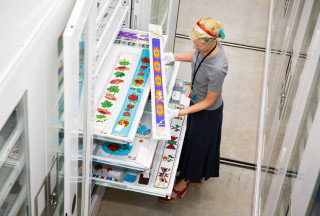
Celebrate Women in Science
Join NHMU on Saturday, March 22, for a celebration of the invaluable contributions made by women anthropologists and researchers.
Our exceptional guest speakers and community partners share a common goal: to inspire and excite women and girls to pursue fulfilling careers in anthropology and related fields.
